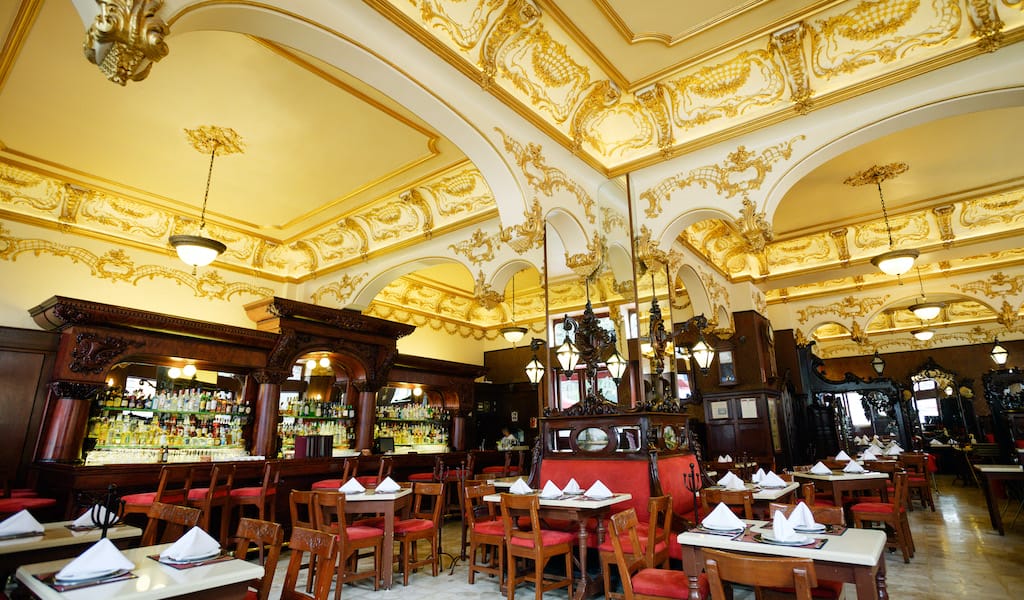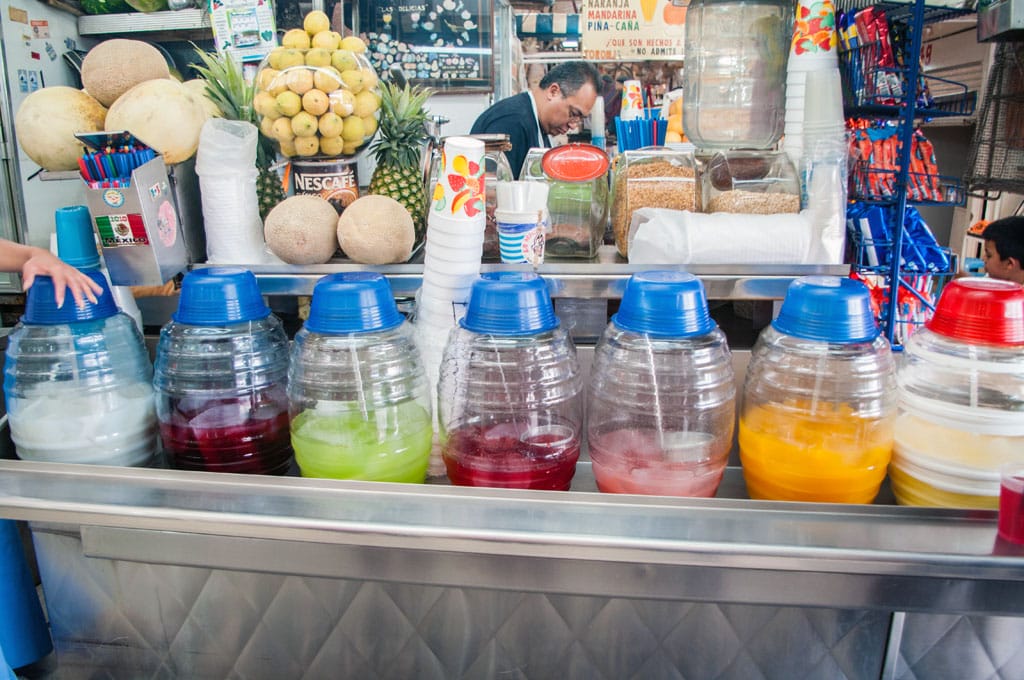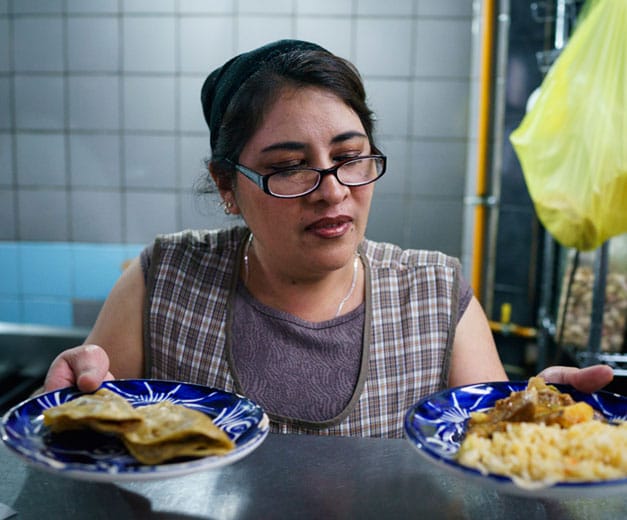As you step into one of the gleaming chocolate-colored booths and slide along the ruby-red upholstered cushions, the nostalgia that permeates La Opera Bar is palpable. From an intimate corner booth you watch the hustle and bustle of the dining room, but remain inside your own dining world. One of the few centenarian businesses in Mexico City, the booths of La Opera have served as the meeting place of notable journalists, politicians, scoundrels and authors. Gabriel Garcia Marquez once refused some fans an autograph on a napkin, left the bar and returned an hour later with signed books for them. A faded newspaper clipping on the wall shows Carlos Monsiváis, José Luis Cuevas, Fernando Benitez and Carlos Fuentes seated around a table, deep in discussion.
“People would debate a lot, they would sit together and talk,” says Moises Escudero, the bar’s current manager, “We aren’t used to that – we’re used to debating on five different [mobile] apps, but people would sit down and talk here, and the booths give you this little bit of isolation so you could hear one another.”
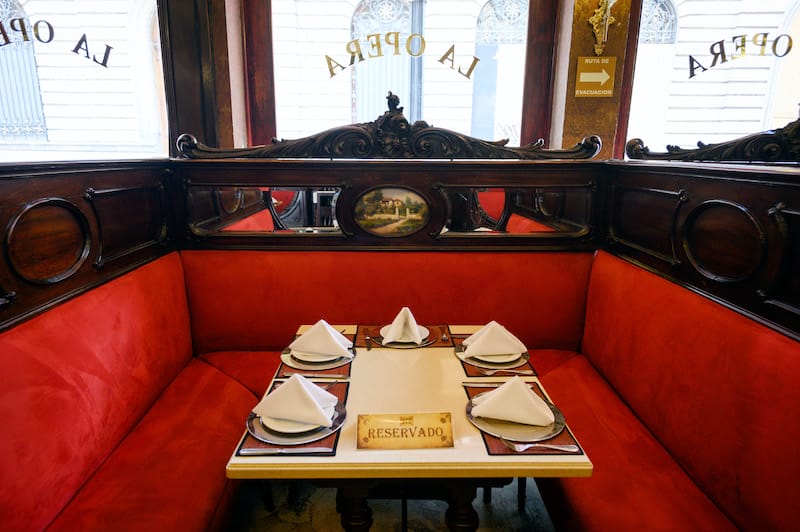
Walking through the front doors at different points in history you might have seen Monsiváis polishing off one of his pieces for the La Reforma or El Universal or witnessed local businessmen sidling up to Porfirio Diaz to ask for political favors. The original La Opera was a few blocks away from its current location, near the current-day Torre Latinoamericana on Madero Street. La Opera sat across from the Teatro de la Ciudad, home to the finest operas of the time, and in those days catered to more of a coffee and cake crowd.
The name stuck even after it moved to its current location on Avenida 5 de Mayo and became a late-night retreat for the rich and well-heeled. Many an opera star has graced the bar with their presence, having a post-show drink and even offering a song if the crowd is lucky. During the early days, a small section of La Opera was cordoned off in the back for lady drinkers, a rare sight in watering holes of the time. This meant that Porforio Diaz and his wife, Carmen, would part ways before they entered, as the ladies had their own entrance on Filomeno Mata street.
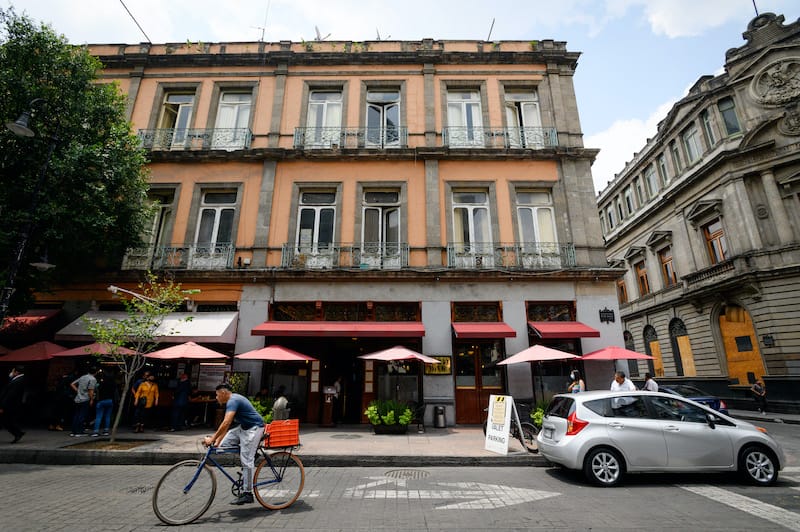
Post-revolution, and after an infamous bullet was shot into the ceiling by Pancho Villa – supposedly as a protest of the bourgeois ambiance of La Opera when Villa’s men came into town to liberate the masses – La Opera was converted into a cantina for several decades, where (mostly) men came to drink and play dominoes. In true cantina style, there were endless plates of snacks that kept coming as long as you had a drink in your hand.
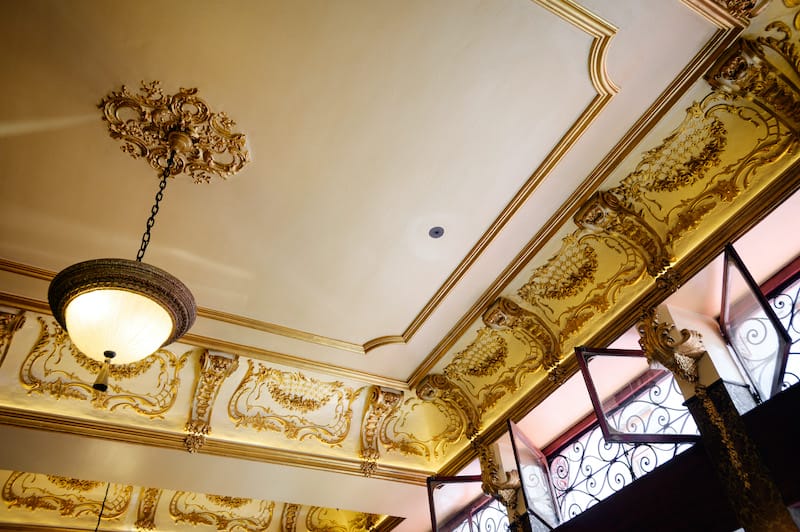
In the 1980s, La Opera evolved once again to become the family-style restaurant it is today. These days, the evening crowd is a smattering of locals with their kids, tables of older men come to squabble over politics and a few gaping tourists that have come to see Villa’s bullet hole in the restaurant’s ceiling. Waiters serve with an air of attentive formality, asking if customers would like a pre-dinner cocktail or one of the Opera’s signature appetizers – snails in chipotle sauce, for example.

The elaborate wooden bar that greets you at the entrance to the restaurant is almost as old as the restaurant itself. It was brought from New Orleans in the 1890s when the Cinco de Mayo location was opened. Glass-covered oil paintings inlaid in the backrests of booths came out of a Chicago-centered art movement in the early 1900s, when the artists signed their work with obscene images instead of their signatures.
While La Opera is not necessarily known as a culinary mecca, its menu satisfies a longing for classic cuisine served with style, and lists many traditional favorites in the lexicon of Mexican cooking – carne asada a la tampiqueña or arrachera on the grill. You won’t find craft cocktails at the bar, but you can order a no-fuss gin and tonic or rum and coke, along with a classic bandera – a shot of tequila, a shot of spicy tomato sangria and a shot of lime juice – to be sipped slowly and intermittently.

While some might say the world has lost its appreciation for the glamour of Mexico’s golden era, there is something lasting about the allure of La Opera bar, something that continues to draw generation after generation to its tables for an after-work drink or a tangy beef tartar spread on slices of olive oil-drenched baguette.
The surrounding streets still swell with vendors like they did in the bar’s heyday, but there are more corporate names on the buildings every year, and there is something comforting in knowing La Opera remains classy and timeless in its décor and decorum. La Opera bar is an obligatory stop if you want a taste of bygone Mexico City and, even if it’s not your style, you will want to see that bullet hole for yourself.
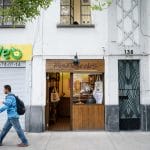 September 16, 2021 Mis Mezcales
September 16, 2021 Mis Mezcales
Has mezcal gone the way of avocado toast, an item that’s become shorthand for cliched […] Posted in Mexico City August 6, 2019 Ask CB
August 6, 2019 Ask CB
Dear Culinary Backstreets,
I’ve heard about drinks in Mexico called aguas frescas, but […] Posted in Mexico City July 6, 2019 El Dux de Venecia
July 6, 2019 El Dux de Venecia
Visiting establishments with a lot of history always warms the cockles of our heart – […] Posted in Mexico City
Published on August 02, 2022
Related stories
September 16, 2021
Mexico CityHas mezcal gone the way of avocado toast, an item that’s become shorthand for cliched hipster trendiness? If you think yes, a visit to Mis Mezcales in Mexico City’s Colonia Roma may be in order. There, you will find Omar Trejo sitting behind his unassuming makeshift bar, parceling out sips to the uninitiated and reminding…
August 6, 2019
Mexico CityDear Culinary Backstreets, I’ve heard about drinks in Mexico called aguas frescas, but what exactly are they? Visitors to Mexico are sure to encounter aguas frescas, a popular category of drinks that are ubiquitous at food stands and eateries around the country. These colorful beverages, whose name literally means “fresh waters,” come in a variety…
July 6, 2019
Mexico CityVisiting establishments with a lot of history always warms the cockles of our heart – even more so when that establishment is the oldest surviving cantina in the city. El Dux de Venecia didn’t start out as a cantina, but it became a drinking establishment in Azcapotzalco – a farming community that became part of…







































